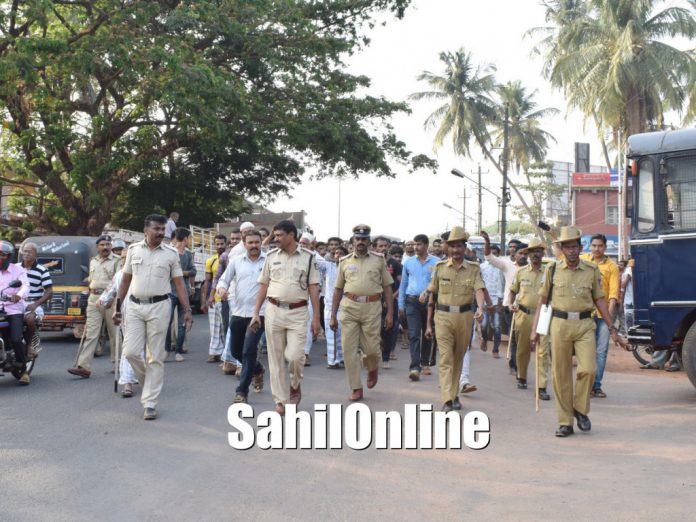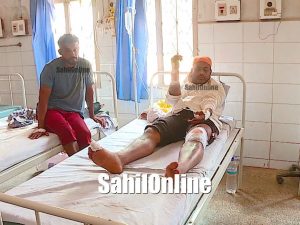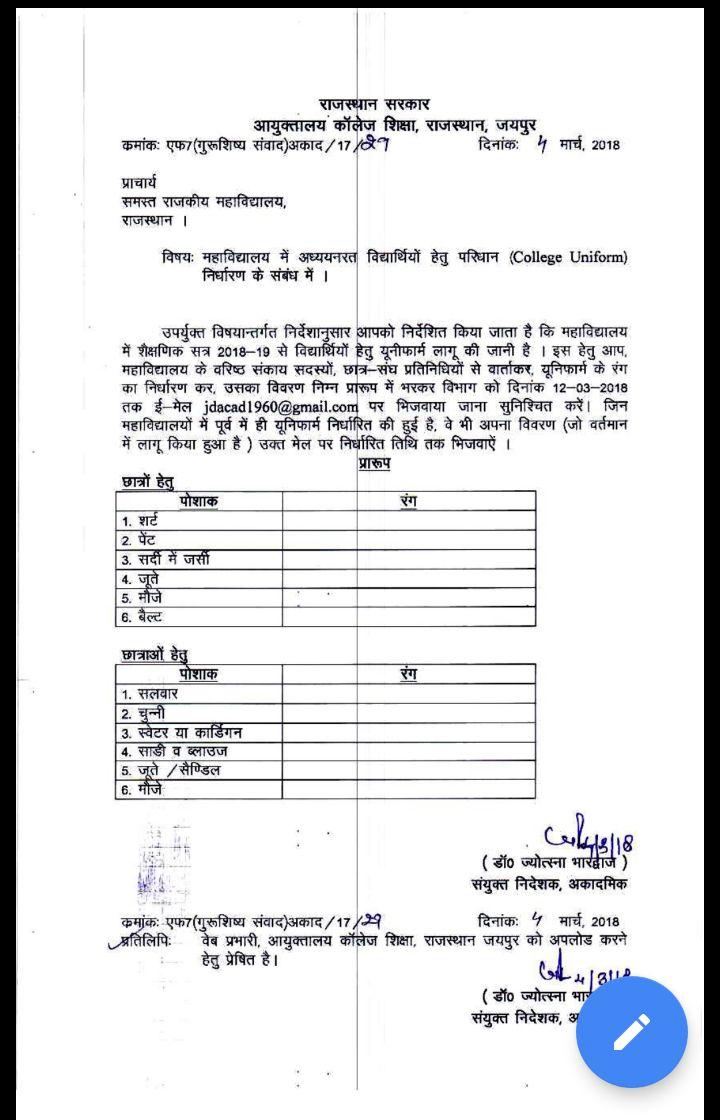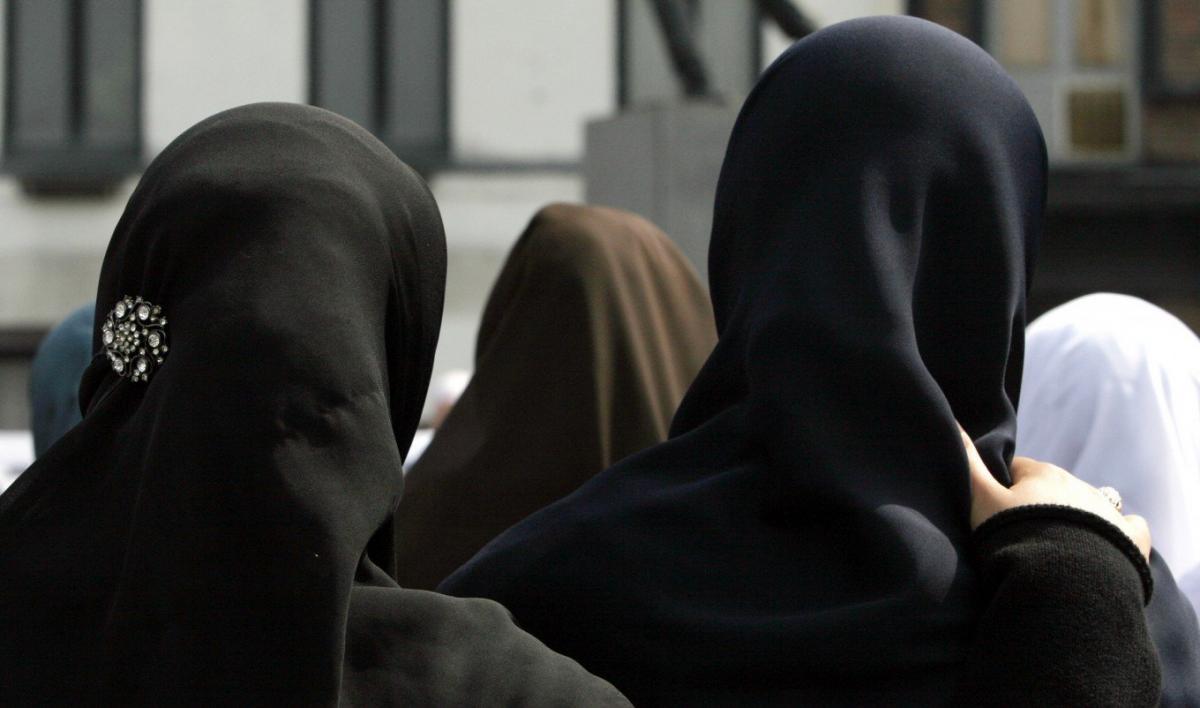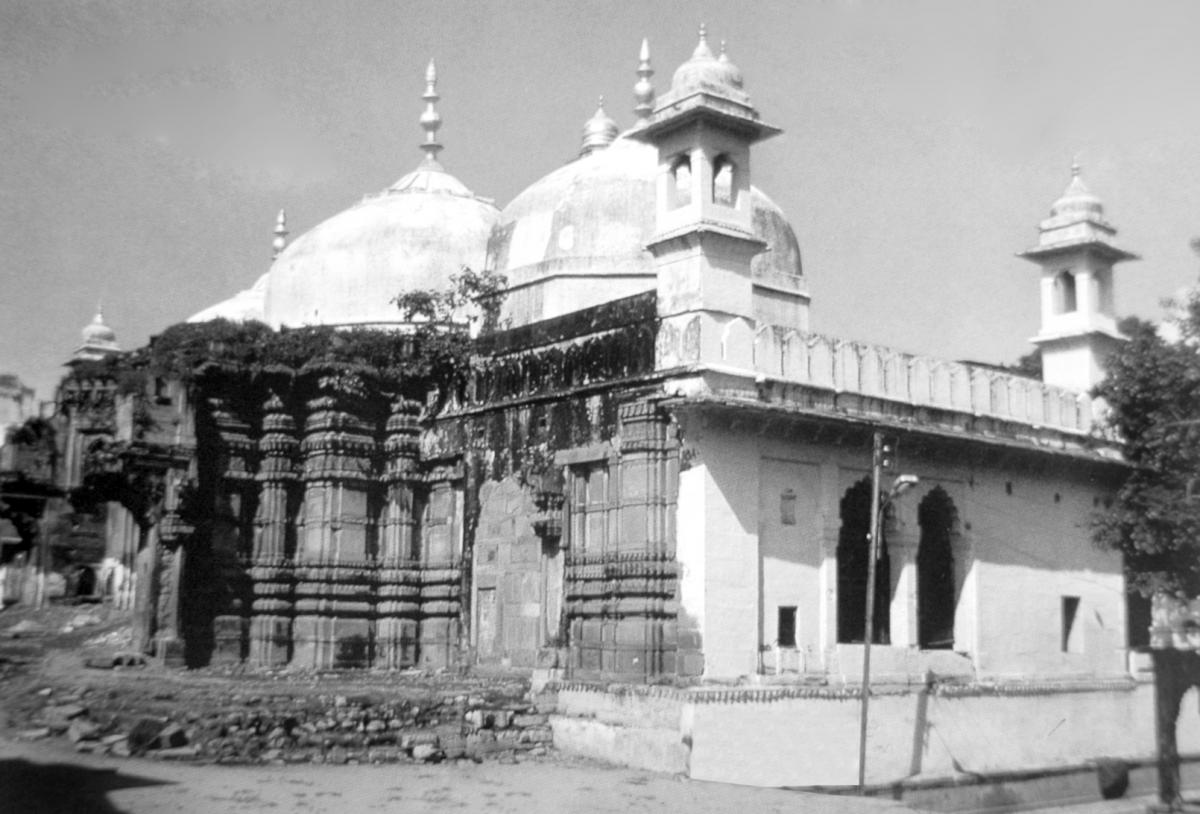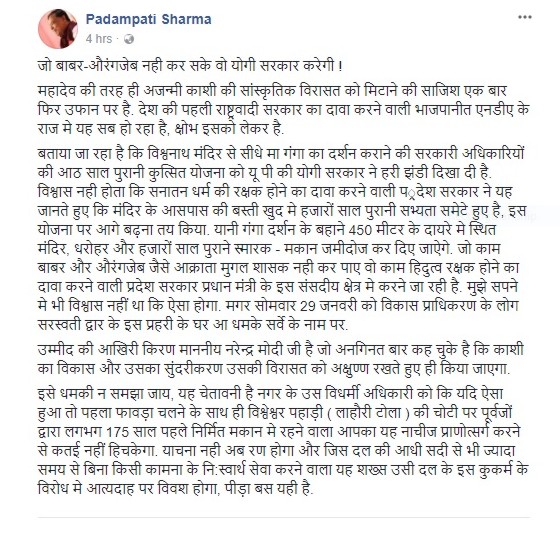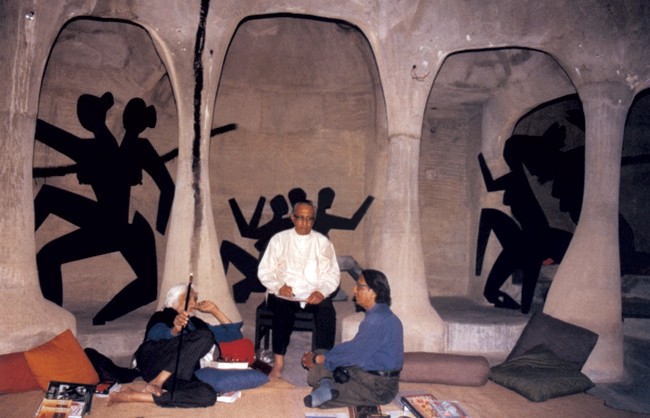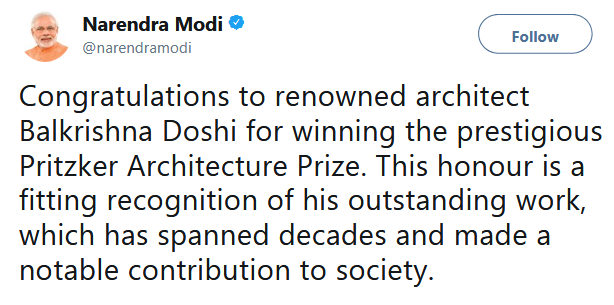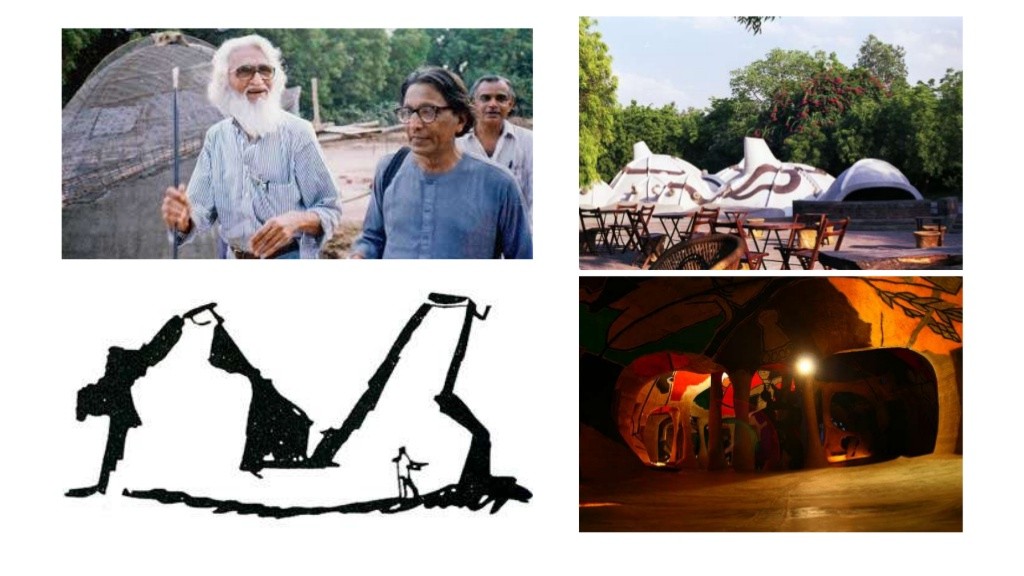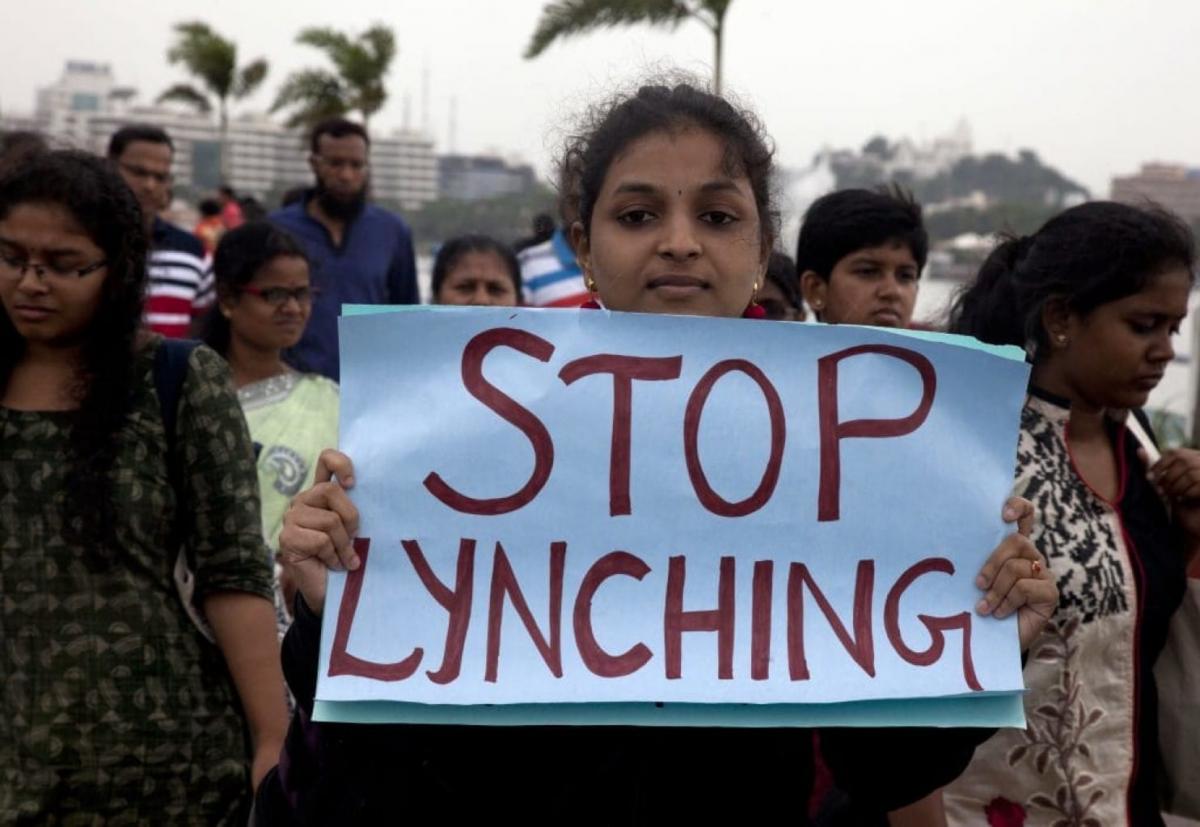Full Text of the Oral Statement by the author at the 37th regular session of UN Human Rights Council, Geneva

General Debate, Item 3, Promotion and Protection of All Human Rights, Civil, Political, Economic, Social and Cultural Rights, Including the Right to Development
Delivered By Sultan Shahin, Founding Editor, New Age Islam
on behalf of Asian-Eurasian Human Rights Forum
Mr. President,
Even17 years after 9/11, terrorism in the name of Islam is nowhere near its end. The so-called Islamic State has been defeated in Iraq and Syria, but it is expanding its presence in Africa and South Asia. Many Taliban terrorists have joined ISIS now and are wreaking havoc in Afghanistan. In one of the deadliest attacks in Egypt’s modern history, ISIS terrorists targeted a Sufi mosque in November 2017, leaving 305 people dead and 128 injured in a town of only 800. The victims were primarily Sufi Muslims. Sufi shrines and its visitors have been targeted by Islamist terrorists around the world, killing thousands and damaging shrines, mosques and libraries, particularly in Pakistan, Libya, Mali and Iran.
Yet, all that one hears from Muslim leaders is rhetoric against Islamist terrorism. No concrete action has been taken to cleanse the Islamic theology of totalitarianism, xenophobia, intolerance and a historical urge to expand the land of Islam through offensive Jihad. One would think that at least Sufi Muslims, who have been for long a victim of Jihadism, an offshoot of neo-Khwarij Salafism, would introspect and look into their own theology and purify it from elements of political Islam.
This may sound strange to some. For, Sufism has been identified as the antidote to Jihadism. It is true that Sufi masters have emphasised pluralism and co-existence in both their sayings and conduct. Their service to humanity and treatment of humans from all caste and creed has been exemplary. No wonder one continues to find people belonging to all religions thronging their shrines. But we must also understand that Sufi scholars and theologians too have been votaries of political Islam.
The strangest thing that is happening now is that rather than cleansing their theology of traces of totalitarianism, large sections of Sufism-oriented Muslims are actually engaged in what can be called a Wahhabisation of Sufism. Enlightening Sufi books of mysticism, ethics and morality have been taken out of the courses of study from Sufi madrasas. The basic Sufi concept of Wahdatul Wujood (Unity of Being) is being replaced in Sufi madrasas with the concept of Wahdatul Shuhood (unity of perception or unity of appearances) invented by Sheikh Sirhindi to counter Ibn-e-Arabi’s ideas that have been described by his followers as Wahdatul Wujood. Some erstwhile Sufism-oriented Muslims are themselves adopting some of the hard-line outlook of Wahhabi-Salafi Muslims on issues of Ziarat-e-Qaboor (grave visitation) and gender segregation, etc. Women are being barred from visiting shrines in the way they used to do before.
Mr. President,
I would like to appeal to Muslim governments represented in the Council to take the issue of terrorism in the name of Islam more seriously than they have so far and cleanse Islamic theology of totalitarian ideas that support offensive Jihad for world domination. The minds of Muslim students of madrasas should not be poisoned with ideas emanating from the doctrine of al-Wala-wal-Bara (having friendship only with Muslims and enmity with all others), or takfirism (calling other Muslims kafir).
There are ideas and instructions in Islamic scriptures that should not be considered applicable to us today. Instead what even earliest Sufi and Salafi theologians have said is that one so-called sword verse alone has abrogated 124 early verses of Quran preaching peace and pluralism. Any instructions given during a war should be considered void once the war is over. Muslim heads of government who rail against terrorism should first introspect and cleanse Islamic theology of elements of totalitarianism.
Mr. President,
Let me elaborate the issues raised here in some detail.
With its almost two billion followers, Islam has spread throughout the world. Born in the sandy desert of Arabia 1400 years ago, it has naturally acquired a local colour everywhere it has gone, while retaining its basic belief systems. Indeed, Islam itself has encouraged this process. The Holy Quran exhorts its followers to believe in all the prophets of God, by whatever names they may now be known, who preceded Prophet Mohammad (peace be upon him) and preached the message of God in the local languages of their times.
In Islamic traditions the number of such seers, who brought messages from God, is put at 1,24,000, though only 25 names could be mentioned in the Quran in the course of their examples being cited to illustrate various teachings. Thus, while expressing belief in the oneness of God and the prophethood of Mohammad, a Muslim simultaneously expresses belief in all the previous messengers of God as well. It is natural that the Muslims have not felt obliged to distance themselves totally from their previous beliefs and cultural practices even after conversion to Islam, to the extent these did not contravene their new Islamic beliefs.
As in Africa and Far East Asia, in South Asia, too, Islam naturally has its own indigenous flavour. And it finds its best expression in the Sufi way of life prevalent in the Indian sub-continent for centuries. Its vibrancy is evident in tens of thousands of people from different religious backgrounds thronging Sufi shrines across the length and breadth of South Asia, and especially at annual urs events. Sufi music programmes continue to be organised in some shrines either weekly or on some special occasions. Sufi music festivals, with the participation of musicians from different parts of the world, continue to attract an ever-expanding number of fans. From classical cultural events to productions of film industry, South Asia continues to celebrate Sufi art in a variety of ways and in a number of events with wide participation. Soul-stirring music, helping the seeker’s quest for the creative infinite, unique to the Indian sub-continent, continues to be produced, particularly in India an Pakistan.
But things have also been changing in the last decades. A determined effort has been made for bringing uniformity in Islamic thoughts and practices, a kind of the Saudi Arabisation of Islam, wiping out local cultural influences from everywhere in the world. Backed by a massive injection of petrodollars, since 1974, the global rise of Salafism has brought about new challenges to the Sufi way of life in the Indian sub-continent as well. While on a superficial glance, the Sufi culture may still appear to thrive, even finding newer expressions in the film and music industries, there are deeper rumblings within. The continuing footfalls in a Sufi shrine should not lull us into losing sight of the grave challenges facing Sufism.
A serious propaganda campaign was unleashed globally over 4o years ago calling Sufism heresy. Sufism has been at the receiving end of criticism throughout Islamic history but what happened in the last decades was particularly virulent and backed not just by enormous riches but also state power.
Two of the most revered and influential 13th and 14th century Salafi scholars Abdu’r Rahman Ibn al- Jawzi and Taqī ad-Dīn Ahmad Ibn Taymiyya describe Sufism as “heretical” and “a Christianized version of Islam” respectively. These and similar views calling Sufism an innovation have been massively propagated around the world in the last decades.
The fact of the matter is that mystical tendencies have existed in Islam from its very inception, the very first Muslims Hazrat Abru Bakr (RA) and Hazrat Ali (RA) being considered the first mystic masters having been taught and trained by the Prophet (pbuh) himself into the secrets of mystical practices. It is important for us to remember in all discussions about Islam that the Prophet (pbuh) himself was first and foremost a mystic, or a Sufi, though this term came into use only later. He used to spend days and weeks in contemplation and meditation in the cave at Hira, as all mystics, Rishis, Munis and Sufis do.
Islam had been brought to the Indian sub-continent by Sufi saints. Understandably, the overwhelming majority of Indian Muslims are or at least have been Sufism-oriented. But many Muslims around the country, particularly in the state of Kerala, now proudly proclaim being Salafi Muslims and call their mosques Salafi mosques. Some Muslims have even started calling themselves Taimi, thus describing themselves followers of Ibn-e-Taimiya, though they never described themselves as Wahhabi or follower of Mohammad Ibn Abdul Wahhab. While, mercifully, Sufi shrines and its visitors, are not yet coming under attack in India, as is happening in other parts of the sub-continent and the world, the pressure on Sufism is manifesting in various other ways.
The leitmotif of the present age is terrorism practiced in the name of Islam. Terrorists call it Jihad. Their ideology has come to be known as Jihadism. Jihadism is considered an extremist offshoot of neo-Khwarij-Salafism-Wahhabism, as practised in Saudi Arabia. Sixteen of the nineteen terrorists involved in 9/11 terrorist attack on American institutions were Saudis and the rest Egyptian who had also gone through the Saudi religious education.
The world began to fear Islam. But it saw Sufism as an antidote to Islamist terrorism. While this brought a positive focus on Sufism, the attacks on Sufism also grew from both the Jihadist and Islamophobe camps.
The internet today contains tens of thousands of pages trying to prove that Sufism is not a pacifist, quietist version of Islam as it is supposed to be. Quotations have been dug up from writings of great Sufi theologians like Hazrat Abdul Qadir Jilani, Imam Ghazali. Ibn-e-Arabi, Sheikh Sirhindi, Shah Waliullah, etc in an effort to prove that they were all as much in support of offensive Jihad against the unbelievers and polytheists to establish Islam’s domination of the world as non-Sufi and traditional orthodox theologians. It would appear that there is a consensus in Islamic theology that the Muslims’ relationship with non-Muslims is that of perpetual war until all world comes under Muslim domination.
So where do Sufis stand on the issue of Offensive or Martial Jihad? From earliest times Sufis have given a textual as well as spiritual exegesis of Quranic exhortations. From earliest Sufi books like Kashf al-Asrar (the Unveiling of the Mysteries) composed by Rashid al-Din al-Maybudi (d. early twelfth century) or al-Qushayri’s Lata’if al-isharat to Hazrat Abdul Qadir Jilani (ra), Imam Abhu Hamid al-Ghazali (ra), India’s very own Mujaddid Alf-e-Saani Sheikh Ahmad Sarhandi (ra) or Shah Waliullah Muhaddis Dehlavi (ra), all of them seem to agree with traditional ulema on the necessity for offensive Jihad to help the word of God dominate the world. They say directly or indirectly that Jihad should go on as long as there is kufr and shirk in the world. The humiliations they describe that should be heaped on Jizya paying non-Muslims make a very difficult read for a person with a 21st century sensibility. For them offensive Jihad and spiritual
Jihad are two sides of the same coin, spiritual jihad being necessary as a preparation for martial Jihad. (Please see Appendix given below for some of these quotations.)
In his authoritative work “Jihad in pre-modern Sufi writing,” Harry S Neale discovers complementarity of spiritual and martial jihad even in early Sufi writings. He says: “Similar to what Ibn Kathir’s tafsir (book of Quranic exegesis) says over 200 years later (14th century), Maybudi’s (early 12th century) Kashf al-Asrar remarks that some religious scholars hold that verse 9:5 abrogates the 124 earlier verses regarding relations with non-Muslims. The fact that an early twelfth-century Sufi tafsir as well as a non-Sufi tafsir from the fourteenth century both discuss the abrogation of earlier Qur’anic verses dealing with the relations between Muslims and non-Muslims suggests that Qur’anic exegetes considered this opinion legitimate and well established.”
In his Wasaya (Admonitions), Ibn-e-Arabi says: “I counsel you to fear God and uphold the requirements of the outer aspects of the sharia and its statutes. The greater jihad is incumbent upon you, which is the jihad against the passions, and when you wage this jihad against your lower self the other jihad against the enemies will be [easy] for you, for if you should be killed [in the martial jihad] you will be among the living martyrs for whom God provides. The merit of the one who wages jihad (mujahid) in God’s path is like that of the devout one who fasts in God’s signs … strive to participate actively [in jihad] in God’s path … beware … if you do not take part in military campaigns and if you are not resolved to go forth [for this purpose] then you will be among the hypocrites ….” [ Ibn-e-Arabi’s Wasaya (Admonitions) as quoted by Harry S Neale in “Jihad in pre-modern Sufi writing”.]
Similarly, Hazrat Abdul Qadir Jilani (ra) also deals with he complementarity of martial and spiritual Jihad. He “emphasises adhering to the dictates of Islamic law as an essential aspect of the greater jihad, which contradicts the idea that Sufis are unconcerned with the fundamental outer aspects of Islam. … though Sufi writings have generally considered the spiritual jihad more difficult than the martial jihad, it does not mean that the spiritual jihad supersedes the martial jihad. Likewise, the terms “greater” and “lesser” do not refer to some hierarchy of importance; rather, … they refer to the greater effort required to subdue the lower self,” says Harry S Neal in “Jihad in pre-modern Sufi writing”.
Growing Opposition To The Practice Of Ziyarat
Strangely, not to speak of Salafi-Wahhabis, even some erstwhile Sufism-oriented Barailvi Muftis in India vehemently oppose the practice of Ziyarat (visiting of Sufi shrines). They come up with outlandish arguments and weak evidences that do not stand up to scrutiny. The maximum they have managed to get to prove their point is some mansukh ahadith (abrogated Prophetic sayings) that forbade the earliest Muslims from visiting the graves. But they turn a blind eye to the nasikh ahadith that came later abolishing the earlier ahadith and allowing and favouring the practice of Ziyarat. In fact, the Prophet (pbuh) had prohibited the Ziyarat temporarily, and later he allowed and encouraged the people to do it regularly for its spiritual benefits.
The reason for the temporary prohibition was that the newly converted Muslims were writing indecent elegies and making offensive statements over the graves of their dead relatives who were predominantly non-Muslims. But later, when Muslims were trained into proper behaviour in graveyards, this prohibition was lifted and a general permission was given by the Prophet (pbuh) for the Muslims, both men and women, to go for Ziyarat and gain spiritual benefits from it. The Prophet (pbuh) addressed his companions and said:
“I had prohibited you from visiting graves. But from now on, you can go for Ziyarat because it will make you feel unattached towards this world and remind you of the hereafter.” (Muslim, Janaiz, 106; Adahi, 37; Abu Dawud janaiz, 77; Ashriba, 7; Tirmidhi, Janaiz, 7; Nasai, Janaiz, 100; Ibn Majah, Janaiz, 47; Ahmad b. Hanbal, I, 147, 452, III, 38, 63, 237, 250, V, 35, 355, 357).
The Prophet (pbuh) himself would go for Ziyarat-e-Qubur especially on the night of mid-Shaabaan (Laylat al-Bara’at). He used to visit the grave of his mother regularly and cry out of his love and remembrance of her, as the following tradition says:
“The Holy Prophet (pbuh) visited the grave of his mother and cried near her grave and also made others around him cry. Thereafter he said: I have taken permission from my Lord to visit the grave of my mother. You too should visit the graves because such a visit will remind you of death.” (Sahih Muslim, vol. 3, p. 65)
Despite this clear Islamic concept of grave-visiting enshrined in the Hadith, the zealot muftis even in Sufi-oriented institutions abhor the women visitors of Sufi shrines on the pretext of intermingling between men and women. They call this age-old traditional Islamic practice haram (forbidden).
The growing Salafi-Wahhabi influence on even the Sufi-oriented Barailvi-Eiteqadi clerics is becoming more and more apparent by the day. The puritanical Barailvi ulema, who call themselves ‘Reformist Sufis’ denounce the spiritually inclined Sufi-minded scholars and ulema for their liberal ideas, declaring them zindiqs (heretics), badmazhab (erroneous in faith) and gumrah (deviant), using exactly the same terms as Salafi ulema do. For instance, on the ground of his interfaith activities like celebration of Christmas and listening to Sufi Music, Pakistani Sufi scholar Dr. Tahirul Qadri has been declared “gumrah” and “badmazhab” by the chief Muftis of Barailvis in India, Mufti Akhtar Raza Khan and Mufti Ziaul Mustafa.
Such retrogressive pronouncements or fatwas of the Sufi-Barailvi maulvis are on the rise. For instance, the Mumbai-based Raza Academy demanded a ban on famous Iranian filmmaker Majid Majidi’s biopic, “Muhammad: The Messenger of God.” They have also issued a fatwa not only against the film, but the entire filmmaking crew, including prominent music composer AR Rahman, who has given music for the film.
Fatwas of Apostasy Emanating From Sufi Shrines
Raza Academy considers all those associated with the film as apostates and wants them to recite the Kalima or confession of faith again, so that they once again come back to the Muslim faith. The fatwa was issued by Mufti Mahmood Akhtar Qadri, a Barailvi cleric appointed as Imam in Haji Ali Dargah in Mumbai. He leads prayers in the mosque of Haji Ali Dargah in Mumbai and also runs a Darul Ifta and a madrasa in the city. Since he is also an acclaimed Mufti with his own Madrasa (Darul Ulum Amjadia) and Darul Ifta, he clearly misuses his position and influence at the shrine while issuing retrogressive fatwas. His fatwas played a major role in provoking the common Sunni Muslims who protested against Majidi’s movie and AR Rahman’s music in it.
Sufi Shrines Issuing Retrogressive Fatwas
Sufi shrines should have no role to play in issuing fatwas. But the imams appointed in the mosques attached to the shrines often hold positions in certain madrasas with their own Darul Ifta. What has a Sufi shrine got to do with a Darul Ifta? Why are imams of mosques associated with Sufi shrines issuing fatwas now?
Mercifully, and gratifyingly, the Sajjadahnashins of several Sufi shrines, most notably Ajmer Sharif and Hazrat Nizamuddin dargahs, took a different stand on music and portrayal of the Prophet (pbuh). They said that A R Rahman must be lauded for his outstanding response; like a true believer. In a written statement, Rahman had said, “I follow the middle path and am part traditionalist and part rationalist. I live in the Western and Eastern worlds and try to love all people for what they are, without judging them.”
Wahhabisation of Sufism
Another aspect of what can be called the Wahhabisation of Sufism is that Sufism-oriented Barailvi ulema and muftis have not only banned traditional practices such as women visitors’ entry to shrines on the excuse of their intermingling with men but also banned traditional cultural practices such as taking out of tazia (a replica of the tomb of Imam Husain, the martyred son of Prophet Muhammad, peace be upon him) processions during Muharram, in which even Hindus used to and still participate in some places, out of deference for Muslim sentiments.
Sufi Literature Removed From Sufi Madrasas
But more worrisome than all this is that Sufi literature has been removed from many Indian Sufi madrasas.
Sufi shrines and khanqahs are running across the country seminaries (madrasas) of mystical learning, Sufi experience and enlightenment. The curriculums of those madrasas used to be so very broad and inclusive in their worldview until a few decades ago that students from all backgrounds were cordially welcomed. Devotional songs were composed there in different vernacular languages and Sufi music (sima) was considered a manifestation of complete submission to God.
ï Beautiful Islamic discourses compiled by Sufis and mystics of India that were taught in madrasas a few decades ago, are no more part of their study materials. Not even Sufi-oriented madrasas of today teach books like Maulana Jalaluddin Rumi’s Masnawi, Hazrat Data Ganj Bakhs Hijweri’s Kashful Mahjub, Shaikh Sa’adi Sherazi’s Gulsitan & Bostan, Hazrat Nixzmuddin Aulia’s Fawaidul Fuwad, Sheikh Shahabudin Suhrawardi’s Awarif ul Ma’arif and historical documents of Islamic mysticism that preach universal values, communal harmony, love for all and hatred for none. Gone are the days when books on reason, wisdom, ethics and morality were part of Madrasa curriculum in India. Far from presenting the broader Islamic notion of Deen and Ummah, present-day madrasa curricula concern the students with the ideological reproduction of works of their own sect (Maslak) and school of law (Fiqhi Mazhab).
Let me be more specific. Some of the Sufi texts previously taught in madrasas were:
ï Kahsful Mahjub by Hazrat Data Ganj Bakhs Hijweri
ï Awariful Ma’arif by Sheikh Shahabudin Suhrawardi
ï Fawaidul Fu’aad by Hazrat Nizamuddin Aulia
ï Masnawi of Maulana Jalaluddin Rumi
ï Gulistan & Bostan by Shaikh Sa’adi Sherazi
ï Several Books on Metaphysics by Mullah Sadra
ï Fususul Hikam (Shiakh Ibn ul Arabi)
ï Life and teachings of great Sufis like Khwaja Muinuddin Chishti (ra), Baba Fareed, Ameer Khusro etc.
Some of the Sufi madrasas that have removed these books are:
ï Madrasa Firangi Mahal (Lucknow)
ï Darul Uloom Misbahul Uloom (now known as Jamia Ashrafia) in Mubarak Pur, Azam Garh
ï Jamia Naeemia (Muradaba)
ï Madrasa Alia Qadria (Badaun)
ï Jamia Manzar-e-Islam (Bareilly)
ï Jamia Mazhar-e-Islam (Bareilly)
ï Darul Uloom Warisia (Lucknow)
ï Madrasa Ahsanul Madaris Qadeem (Kanpur)
ï Madrasa Alia, Fatehpuri Masjid, Delhi
These books served as the main stimulus for exhorting great moral and spiritual ideals. They contain basic concepts of Sufism such as Wahdatul Wujood (unity of existence), Sulh-e-Kul (peace with all), Ilmul Yaqeen (knowledge with firm faith), Zikr (incantation), Muraqaba (meditation), observance of Taqwa (God-consciousness), Taubah (repentance of sins), Ikhlas (sincerity), Tawakkul (contentment and trust in God), Sidq (truthfulness), Amanah (trustworthiness), Istiqamah (uprightness) and Shukr (thankfulness). It is only after mastering these higher spiritual disciplines that a student in those madrasas was given the degree of Alim or Fazil.
‘Love for all and hatred for none’ was the legacy of Sufis, as enshrined by the pioneer of Chishti Sufi order in India, Khwaja Moinuddin Chishti of Ajmer, popularly known as Gharib Nawaz (the benefactor of the poor). This legacy greatly impacted their attitude towards other faith traditions. As a matter of fact, Sufi literature helped the madrasa graduates to embrace universal values and essential messages of Islam such as brotherhood of mankind, pluralism, tolerance, religious harmony, moral excellence and service to humanity regardless of faith and creed.
But the Sufi madrasas have removed the portion of Sufi literature that was taught in Indian madrasas, as an integral part of Dars-e-Nizami, for long. No wonder, even the students of Sufi-oriented madrasas have now developed an attitude of intolerance in their character and views.
Essential Sufi Concepts Are Being Misrepresented
Not only has enlightening Sufi literature been removed but also the essential Sufi concepts are being misrepresented now. For instance, Sulh-e-Kul (peace with all), a Sufi term that essentially means: equal respect for all, is now misconstrued. According the Barailvi clerics, Sulh-e-Kul means reconciliation with other Islamic sects. So, anyone who befriends people of all Islamic sects and does not detest them, is a Sulh -e- Kulli and thus misguided in their view. However, this unfavourable development is also being criticised by some Sufi ideologues such as: Shaikh Abu Saeed Ihsanullah Safawi of Khanqah Aarifia, Allahabad and Syed Salman Chishti of Chishtiya Foundation of Ajmer Dargah.
The Barailvi clerics are opposed to these scholars as they are to Dr. Tahirul Qadri because of their openness to music (Sima), acceptance of all faith traditions and sects, and companionship with other religious groups such as Hindus and Sikhs.
Wahdatul Wujood Being Misrepresented As Wahdatul Shuhud
Even in terms of Sufism’s spiritual philosophy, Wahdatul Wujood, one notices even in casual discussions with Sufi-Barailvi scholars that it has been practically replaced by Wahdatul Shuhood, probably to make it acceptable in the pro-Salafi-Wahhabi milieu created by the spread of Petrodollar Islam. This process actually started with Mujaddid Alf-e-Saani Sheikh Ahmad Sarhandi in 16th-17th century and later consolidated with Shah Waliullah Dehlavi in 18th century. As defined in 12th-13th century by Sheikh Mohiyuddin Ibn-e-Arabi, an Andalusian Scholar, Sufi mystic, poet, and philosopher, called by many “the genuine saint,” Wahdatul Wujood stresses that “there is no true existence except the Ultimate Truth (God).” This is completely in line with Quranic teaching: “And what is the life of this world except the enjoyment of delusion.” (3:185)
Other ways of explaining Wahdatul Wujood are: “the only truth within the universe is God,” and, “all things exist within God only.” In still other words, the existence of God is the only truth (haq) and the idea of a separated created universe is falsehood (batil). Sheikh Sarhandi countered this with his concept of Wahdatul Shuhood, “unity of appearance,” or “unity of perceptions,” also called in English “Apparentism.” In his view “any experience of unity between God and the created world is purely subjective and occurs only in the mind of the believer; it has no objective counterpart in the real world.” Ibn-e-Arabi’s position, Sheikh Ahmad Sarhandi felt led to pantheism, which was contrary to tenets of Islam. He held that God and creation are not identical. In his view the creation is a shadow or reflection of Divine names and attributes.
Then in an effort to reconcile the vastly different or even contrarian concepts of Wahdatul Wujood and Wahdatul Shuhood, Shah Waliullah dismissed the differences as mere “verbal controversies” and ascribed these to ambiguities of language. Then to further downplay the concept of Wahdatul Wujood, he called it merely a less advanced stage of Wahdatul Shuhood, though the fact is that Wahdatul Shuhood may be considered the first stage of the core of Islamic spiritualism, Wahdatul Wujood.
The result is that today Wahdatul Wujood is taught as if it were Wadhatul Shuhood. You ask an alim from a classical Sufi madrasa to explain Wahdatul Wujood and he will invariably give you the definition of Wahdatul Shuhood. Indeed, he will also dismiss the concept of Wahdatul Wujood in the process quite explicitly, saying this is not meant by Wahdatul Wujood. The actual concept of Wahdatul Wujood is dismissed as heresy as it is considered too close to advaita (non-duality) of Vedic Hinduism.
Gender equality in Islam
Gender segregation and discrimination is rife throughout the country. Practically everywhere, most of the shrines have stopped men and women visiting shrines together. A bizarre ruling came a couple of years ago form the trust of one of Mumbai’s iconic landmarks, the Haji Ali Dargah. It is a “grievous sin” as per Islam, it says, for women to be in close proximity of the grave of a male Muslim saint. It raised this point in the Bombay High Court on 20 October 2015 while defending its ban on women from entering the shrine’s inner sanctum (Mazaar). The “unanimous” stand of all trustees forms part of a resolution passed by the Dargah’s trust. It is strange that while men and women can perform Haj together and go around Kaaba Sharif and pray there together, they can’t visit a Sufi shrine together. Sufis were the epitome of kindness to all. Even in orthodox Islam, men and women should not be segregated in the best of Islamic tradition. There is no scripture of Islam superior to the Holy Quran. The Quran talks of men and women in the same breath in its verses in terms of prayer, their rights and rewards and punishments:
[Holy Quran 2:228]” And for women are rights over men similar to those of men over women.”
[16:97]: (Whoever does righteous acts, whether male or female, while he is a believer, verily, to him We will give a good life, and We shall pay them certainly a reward in proportion to the best of what they used to do.)
[33:35] (Surely for men who submit to Allah and for women who submit to Allah, for believing men and for believing women, for devout men and devout women, for truthful men and truthful women, for steadfast men and steadfast women, for humble men and humble women, for charitable men and charitable women, for fasting men and fasting women, for men who guard their chastity and women who guard their chastity, for men who remember Allah much and for women who remember Allah much, for all of them Allah has prepared forgiveness and a mighty reward.
There is gender equality in Islam in religious obligations as well. Equal religious duties and rituals are prescribed for both women and men. Testimony of Faith (Shahadah), Prayer (Salah), Obligatory Charity (Zakat), Fasting (Saum), and Pilgrimage (Hajj) are equally required from both genders.
Gender segregation at Sufi Shrines
If God treats men and women equal in all religious obligations as well as rewards and punishments, no clerics should feel entitled to ban her from entering a Sufi shrine. But the fact that this is happening in a SUFI shrine and indeed in most Sufi shrines across the country is truly worrisome. Khanqah Alia Qadria Rizvia of Bareilly, for instance, among many others, does not allow women to enter its shrine premises.
Sufis were the most accepting of all people, but those who claim to be their followers, are certainly not worthy of being called even Sufi-oriented Muslims.
The spirit of Sufism is clearly in decline in India today despite the apparent vibrancy in its practices. The radical Wahhabi-Salafi thoughts appear to have seeped deeply into the veins of the Muslim society. The concept of Islam as a spiritual path to salvation is giving way to xenophobia, intolerance and totalitarianism of political Islam. Unless the concept of total non-duality, advaita, oneness of existence, Wahdatul Wujood is restored to its primacy in Islamic spiritualism, support for a humane version of Islam will continue to dwindle and even Sufi-Barailvi-Eiteqadi Muslim society will keep supporting gender segregation and discrimination in Sufi shrines, or violence in the name of killing apostates, etc. For it is the Wahdat-e-Wujoodi understanding of the universe and God as that gave Sufism its distinction as the most humane understanding of the creative infinite we worship, whether we are followers of the book that was revealed to Prophet Mohammad or the books that were revealed to any of the previous 124,000 prophets of Islam since Adam (AS).
Having discussed what ails us, it’s time to think if there is something we can do to set things right. As I said earlier, terrorism in the name of Islam has become the leitmotif of this new age that started with the biggest terrorist event at the dawn of the 21st century. This has resulted in a growing fear of Islam. A religion that had come as a rahmat (blessing) to mankind has become an object of fear. Some of the Islamophobia is certainly promoted by vested interests, but there is also a genuine fear of Islam among ordinary people around the world. A Muslim lady in Peshawar had voiced this most poignantly after the Peshawar school massacre by Taliban killing 142 children and teachers by asking: Is this Islam? We owe it to our religion that no one has to ask this question again. This is clearly our top priority now. I would like to make just a couple of submissions.
1. The first step in resolving an issue is to accept that there is an issue. We have to accept that there are issues with our theology, the theology of consensus of all sections of Muslims, not just Salafi-Wahhabis, as we Sufi-oriented Muslims are wont to say very readily. The theology we have now is by and large a theology of violence, exclusion and supremacism, geared to achieving world domination. So, we need a new theology, a new understanding of Islam that is geared to accepting the present situation in which Muslims have to live as weak minorities, deriving our rights entirely from secular constitutions, in more than a hundred countries of the world including India. We must see that Muslim-majority nations, particularly those who claim to be run by Islamic governments, are probably the most corrupt, most inhumane, and also the most dependent on world powers. This also acts as an incentive to Jihadists to bring down these governments and use terrorism based on Islamic theology as a methodology for pursuing that goal. So, we need to evolve a theology of peace, pluralism, coexistence and justice including gender justice, that is internally consistent and coherent. In order to do so we will have to relook at the core of our theology. Once this is accepted we will need to brainstorm together on how to go about it. But that is the next step.
2. The very minimum that we mainstream and mystically-inspired Muslims need to do is to reinstate the actual Sufi understanding of Wahdatul Wujood in our hearts. That is true Sufism. If it resembles the concept of advaita in Vedanta, that is all the more reason it should be seen as the genuine understanding of Existence, of Being, and its Oneness (tawhid). This shouldn’t be the reason to discard it. It only proves the truth of God’s commandments in Quran that we are all one nation, and God sent his emissaries to all societies who taught people in their tongues and the languages of their times, but the message was the same. Let us readopt Wahdatul Wujood fully. The attempt to reconcile Sufism with orthodoxy, seeking to become acceptable to orthodox ulema, has cost Sufism too much. Let us abandon this project and stand for what we believe in, if we do indeed believe in God’s immanence and transcendence rather than His separation from all Existence.
—–
I must present here some of the quotations from Sufi masters and theologians mentioned above to put the issue in perspective, take the discussion forward and try to find a way out of this labyrinth.
Appendix 1
Eleventh century Sufi mystic, theologian, jurist and philosopher Imam Abū Ḥāmid Al-Ghazali is said to have an understanding of Islam next only to that of Prophet Mohammad (saw). He is quoted ad nauseum in the media to have said about Jihad and relationship with non-Muslims:
“Just as scholastic theology is used with thinking people concerning the truth, the sword is used with the infidels after informing them with the truth…so just as it cannot be said that the sword was Mohammad’s most eloquent argument, neither can it be said that scholastic theology is the ultimate science.”–Ihy’a ‘Uloum ed-Din by al-Ghazali vol. V p. 35
…one must go on jihad at least once a year…one may use a catapult against them [non-Muslims] when they are in a fortress, even if among them are women and children. One may set fire to them and/or drown them…If a person of the Ahl al-Kitab [People of The Book – Jews and Christians, typically] is enslaved, his marriage is [automatically] revoked…One may cut down their trees…One must destroy their useless books. Jihadists may take as booty whatever they decide…they may steal as much food as they need…
…the dhimmi is obliged not to mention Allah or His Apostle…Jews, Christians, and Majians must pay the jizya [poll tax on non-Muslims] …on offering up the jizya, the dhimmi must hang his head while the official takes hold of his beard and hits [the dhimmi] on the protuberant bone beneath his ear [i.e., the mandible] … They are not permitted to ostentatiously display their wine or church bells…their houses may not be higher than the Muslim’s, no matter how low that is. The dhimmi may not ride an elegant horse or mule; he may ride a donkey only if the saddle[-work] is of wood. He may not walk on the good part of the road. They [the dhimmis] have to wear [an identifying] patch [on their clothing], even women, and even in the [public] baths…[dhimmis] must hold their tongue….
“After the death of Muhammad, the man of the miracle [the Qur’an] and the apostle of truth and the companions, fearing the weakening of Islam, the decrease of the number of its followers, and the return of masses to their previous infidelity [This is referring to to hurub al-riddah— the Wars of Apostasy — which were fought during the reign of Caliph Abu Bakr and delayed the Wars of Conquest against the kuffar], saw that holy war and invading other countries for the sake of Allah, smashing the faces of the infidels with the sword and making people enter the religion of Allah as the most worthy of all tasks and better than all sciences.”–Ihy’a ‘Uloum ed-Din by al-Ghazali vol. V p. 35
—– Imam Abū Ḥāmid Al-Ghazali (1058 –1111). Kitab al-Wagiz fi fiqh madhab al-imam al-Safi’i, Beirut, 1979, pp. 186, 190-91; 199-200; 202-203. [English translation by Dr. Michael Schub.]
—-
Appendix 2
Most revered Indian Sufi mystic and theologian, considered Mujaddid Alf-e-Thani, Shaykh Ahmad Sirhindi (1564—1624), says:
Shariat can be fostered through the sword….
Whenever a Jew is killed, it is for the benefit of Islam.
Kufr and Islam are opposed to each other. The progress of one is possible only at the expense of the other and co—existence between these two contradictory faiths is unthinkable…
The honour of Islam lies in insulting kufr and kafirs. One who respects kafirs, dishonours the Muslims. To respect them does not merely mean honouring them and assigning them a seat of honour in any assembly, but it also implies keeping company with them or showing considerations to them. They should be kept at an arm’s length like dogs. If some worldly business cannot be performed without them, in that case only a minimum of contact should be established with them but without taking them into confidence….
The highest Islamic sentiment asserts that it is better to forego that worldly business and that no relationship should be established with the kafirs. The real purpose in levying jizya on them [the non—Muslims] is to humiliate then to such an extent that, on account of fear of jizya, they may not be able to dress well and to live in grandeur. They should constantly remain terrified and trembling. It is intended to hold them under contempt and to uphold the honour and might of Islam….
Cow—sacrifice in India is the noblest of Islamic practices. The kafirs may probably agree to pay jizya but they shall never concede to cow—sacrifice.…
The execution of the accursed kafir of Gobindwal [a Sikh who lead an uprising against the oppressive Muslim rule of his community] is an important achievement and is the cause of great defeat of the accursed Hindus….
Whatever might have been the motive behind the execution, the dishonour of the kafirs is an act of highest grace for the Muslims. Before the execution of the kafirs I had seen in a vision that the Emperor had destroyed the crown of the head of Shirk. Verily he was the chief of the Mushriks and the leader of the kafirs….
— Saiyid Athar Abbas Rizvi, Muslim revivalist movements in northern India in the sixteenth and seventeenth centuries. Agra, Lucknow: Agra University, Balkrishna Book Co, 1965, pp.
Also quoted in Yohanan Friedmann’s Shaykh Ahmad Sirhindi: An Outline of His Thought and a Study of His Image in the Eyes of Posterity pp. 73-74
—-
Appendix 3
Shah Waliullah Muhaddis Dehlavi (1703—1762), is revered by Muslims as a mystic and theologian of the highest order. Some of the selections of his writings doing the rounds on internet are:
It has become clear to my mind that the kingdom of heaven has predestined that kafirs should be reduced to a state of humiliation and treated with utter contempt…. Should that repository of majesty and dauntless courage [Nizam al—Maluk] gird his loins and direct his attention to such a task he can conquer the world…. Thus, the faith will become more popular and his own power strengthened; a little effort would be profoundly rewarded. Should he make no effort, they [the Marathas] would inevitably be weakened and annihilated through celestial calamities and in such an event he would gain no credit…As I have learnt this unequivocally [from the divine] I spontaneously write to draw your attention to the great opportunity laid before you. You should therefore not be negligent in fighting jihad…Oh Kings! Mala a’la urges you to draw your swords and not put them back in their sheaths again until Allah has separated the Muslims from the polytheists and the rebellious kafirs and the sinners are made absolutely feeble and helpless.’
In his testament to [subsequent Caliph] Umar, [then Caliph] Abu Bakr had informed him that if he feared God, the entire world would be frightened of him [‘Umar]. Sages had declared that the world resembled a shadow. If a man ran after his shadow it would pursue him, and if he took flight from the shadow it would still pursue him. God has chosen you as the protector of the Sunnis as there is no—one else to perform this duty, and it is crucial that at all times you consider your role as obligatory. By taking up the sword to make Islam supreme and by subordinating your own personal needs to this cause, you will reap vast benefits.
We beseech you [in a letter to Afghan ruler Ahmad Shah Abdali Durrani] in the name of the Prophet to fight a jihad against the infidels of this region. This would entitle you to great rewards before God the Most High and your name would be included in the list of those who fought jihad for His sake. As far as worldly gains are concerned, incalculable booty would fall into the hands of the Islamic ghazis and the Muslims would be liberated from their bonds. The invasion of Nadir Shah who destroyed the Muslims left the Marathas and Jats secure and prosperous. This resulted in the infidels regaining their strength and in the reduction of the Muslim leaders of Delhi to mere puppets.
When the conquering army arrives in an area with a mixed Muslim—Hindu population, the imperial guards should transfer the Muslims from their villages to the towns and at the same time care for their property. Financial assistance should be given by governments to the deprived and the poor as well as to Sayyids and the ‘ulama. Their generosity would then become famous with prompt prayers for their victories. Each town would eagerly await the arrival of the Islamic army (‘that paragon of bounty’). Moreover, wherever there was even the slightest fear of a Muslim defeat, the Islamic army should be there to disperse infidels to all corners of the earth. Jihad should be their first priority, thereby ensuring the security of every Muslim.
— Saiyid Athar Abbas Rizvi. Shah Wali Allah and his times. Canberra, Australia, Ma’rifat Publishing House, 1980, pp. 294—296, 299, 301, 305.
——
Appendix 4
In his analysis of Shah Wali Allah and his times, pp. 285 286. Rizvi writes:
According to Shah Wali Allah the mark of the perfect implementation of the Shari’a was the performance of jihad. He compared the duties of Muslims in relation to the law to those of a favourite slave who administered bitter medicine to other slaves in a household. If this was done forcefully it was quite legitimate but if someone mixed it with kindness it was even better. However, there were people, said the Shah who indulged in their lower natures by following their ancestral religion, ignoring the advice and commands of the Prophet Muhammad. If one chose to explain Islam to such people like this it was to do then a disservice. Force, said the Shah, was the much better course — Islam should be forced down their throats like bitter medicine to a child. This, however, was only possible if the leaders of the non—Muslim communities who failed to accept Islam were killed; the strength of the community was reduced, their property confiscated and a situation was created which led to their followers and descendants willingly accepting Islam. The Shah pleaded that the universal domination of Islam was not possible without jihad and by holding on to the tails of cows.
——
Appendix 5
While these quotations thoughts appear quite out of sync with the circumstances of the present times, one has to remember that all scholars are products of their times. Even in their own lifetimes, their views keep changing and sometimes they appear to give completely contradictory views. Take, for instance, Imam Muhammad al-Ghazali’s many books. While in the above quote he seems to support offensive Jihad, in his Thematic Commentary on the Qur’an, he makes every effort to prove that the message of Quran is peaceful and pluralistic. Nothing shows this better than his commentary on Surah Taubah verse 5 (Q 9:5) which is considered even by earliest Sufi commentators as a sword verse that has abrogated as many as 124 verses of Quran preaching peace and pluralism. A brief quote from his commentary will be very illuminating, both of Ghazali’s attitude to pluralism and contradictions in his own thinking at various times.
Imam Al-Ghazali writes his Commentary on Surah Taubah verse 5, (Q.9:5):
“… Muslims are therefore basically opposed to war and are never the ones to start it. By the imperative of their own religion, they are taught not to impose their beliefs on others by force. Their mission is to impart and communicate Allah’s message, leaving people free to decide whether to believe or reject it. Those who refuse to believe are free to pursue their lives in peace as long as they do not pose any obstacle or threat to Islam and the Muslims, who perceive their faith as the strongest and most vital binding relationship between Allah and humankind and that it is their responsibility to make others aware of it and provide them with the opportunity to understand and appreciate it.
“This is the basis of the relationship between Muslims and non-Muslims in Islamic society. Allah says elsewhere in the Qur’an:
“Therefore, if they (the unbelievers) do not trouble you and cease their hostility towards you and offer you peace, God gives you no authority over them” [al-Nisa: 90]. Those who take up arms against a Muslim state or parts of it must be met with force, and if they are overcome, they should be disarmed. Once that is achieved, they are free to lead their own lives and practise their beliefs in peace and security under the protection of the Muslim authorities, in return for which they have to pay a levy.
“This is the background against which prescription of the Jizyah, or exemption tax, came into being. It is not due from those who are neutral and have never taken up arms against the Muslim state. The Qur’anic verse gives ample explanation for the reason behind the establishment of this tax, for it stipulates who should pay it. They are those “who do not believe in God and the Last Day, who do not forbid what God and His Messenger have forbidden, and who do not follow the true religion, until they pay the exemption tax unreservedly and with humility.”
— Shaykh Muhammad al-Ghazali, “A Thematic Commentary on the Qur’an” [The International Institute of Islamic Thought, Second Printing, 2005]

